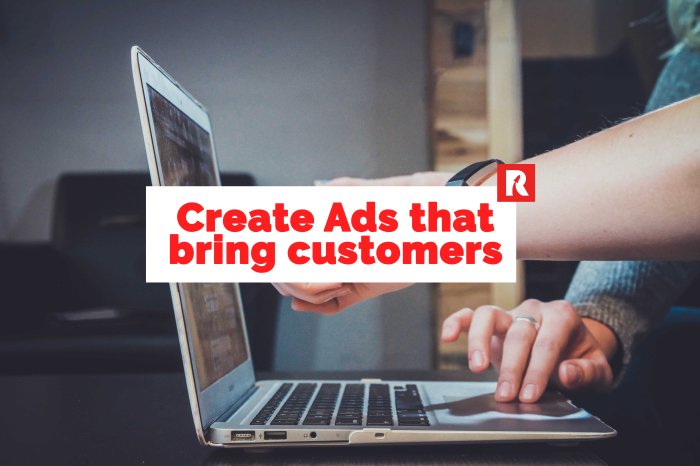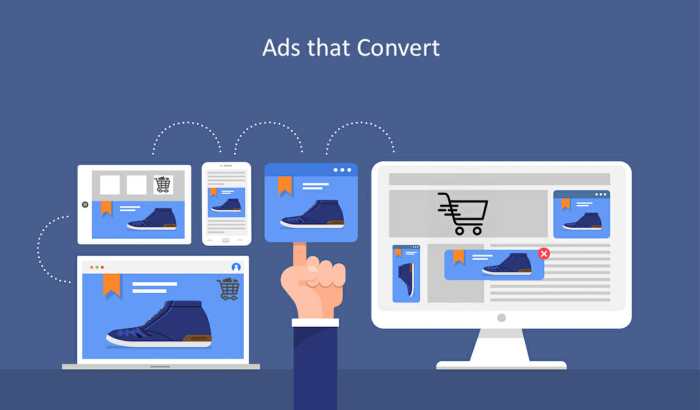Creating Mobile Ads That Convert sets the stage for mastering the art of mobile advertising, diving into strategies and techniques that drive high conversion rates and engagement. Get ready for a journey filled with creativity and data-driven insights!
In this guide, we’ll explore the key elements of crafting effective mobile ads that captivate audiences and deliver results. From design to targeting, we’ve got you covered with everything you need to know to create mobile ads that convert like a pro.
Understanding Mobile Ads
Mobile ads are a crucial component of digital marketing strategies in today’s tech-savvy world. With the increasing use of smartphones and tablets, businesses are leveraging mobile ads to reach their target audience effectively on the go.
Importance of Mobile Ads
- Mobile ads offer a personalized and interactive way to engage with users, leading to higher conversion rates compared to traditional advertising methods.
- According to a study by eMarketer, mobile ad spending is projected to surpass traditional ad spending by 2023, highlighting the growing importance of mobile ads in the marketing landscape.
- Mobile ads allow businesses to target specific demographics, locations, and interests of users, resulting in more targeted and relevant advertising campaigns.
Key Differences in Mobile Ads
- Mobile ads are optimized for smaller screens and touch interactions, making them more user-friendly and engaging for mobile users.
- Unlike traditional ads, mobile ads can leverage features like geotargeting, push notifications, and in-app advertising to deliver personalized content to users in real-time.
- Mobile ads often require a more concise and visually appealing design to capture users’ attention quickly in the fast-paced mobile environment.
Effectiveness of Mobile Ads
- Studies have shown that mobile ads have a higher click-through rate (CTR) compared to desktop ads, indicating their effectiveness in capturing user interest and driving traffic to websites.
- Research by Google found that mobile-optimized ads can increase conversion rates by 103%, emphasizing the importance of creating mobile-responsive ads for better performance.
- Case studies from companies like Airbnb and Starbucks have demonstrated significant improvements in conversion rates and ROI through strategic mobile advertising campaigns.
Designing Compelling Ad Creatives
Creating visually appealing mobile ad creatives is essential for catching the attention of your target audience and driving conversions. High-quality images and engaging copy play a crucial role in making your ads stand out and resonate with users. Here are some best practices and tips for optimizing ad creatives for different mobile devices and screen sizes.
Use High-Quality Images
High-quality images can make a significant impact on the overall look and feel of your mobile ads. Make sure to use clear, vibrant images that are relevant to your product or service. Avoid using blurry or pixelated images, as they can deter users from engaging with your ad.
Write Engaging Copy
The copy in your mobile ad should be concise, compelling, and relevant to your target audience. Use action-oriented language to encourage users to take the desired action, whether it’s clicking on the ad or making a purchase. Highlight the key benefits of your product or service in a way that resonates with your audience.
Optimize for Different Devices
It’s essential to optimize your ad creatives for different mobile devices and screen sizes to ensure a seamless user experience. Test your creatives on various devices to make sure they display correctly and are easy to interact with. Consider using responsive design techniques to adapt your creatives to different screen sizes automatically.
Crafting Persuasive Ad Copy
When it comes to crafting persuasive ad copy for mobile ads, it’s essential to grab the attention of your audience and compel them to take action. Here are some strategies to help you write ad copy that drives clicks and conversions.
Using Strong Calls-to-Action (CTAs)
One of the key elements of persuasive ad copy is a strong call-to-action (CTA) that clearly tells the audience what you want them to do next. Whether it’s “Shop Now,” “Learn More,” or “Sign Up Today,” a compelling CTA can make all the difference in getting users to click on your ad.
Make sure your CTA stands out visually and is placed prominently in your ad creative. Use action-oriented language and create a sense of urgency to prompt immediate action from the user.
Remember to test different CTAs to see which ones resonate best with your audience and drive the highest conversion rates. A/B testing can help you optimize your ad copy for maximum effectiveness.
Examples of Successful Ad Copy
- Example 1: A fitness app ad that says, “Get in the best shape of your life! Download our app now and start your fitness journey today.” This ad copy combines a strong CTA with a compelling value proposition to drive conversions.
- Example 2: An e-commerce ad that reads, “Limited-time offer: Buy one, get one free! Shop now before it’s too late.” This ad copy creates a sense of urgency and incentivizes users to take advantage of the promotion.
- Example 3: A travel app ad stating, “Explore the world with ease. Book your next adventure with our app and save 20% on your first booking.” This ad copy highlights the benefits of using the app and offers a discount to entice users to convert.
Targeting the Right Audience: Creating Mobile Ads That Convert

In the world of mobile advertising, targeting the right audience is crucial for the success of any campaign. By reaching the right people with the right message at the right time, you can significantly increase your conversion rates and overall ROI.
Segmenting Audiences, Creating Mobile Ads That Convert
Segmenting your audience based on demographics, interests, and behaviors is key to delivering personalized and relevant ads. Here are some methods to effectively segment your audience:
- Demographics: Divide your audience based on age, gender, location, income level, education, etc. This helps tailor your message to specific groups.
- Interests: Analyze what your audience likes, their hobbies, favorite activities, and use this information to create ads that resonate with their interests.
- Behaviors: Look at how your audience interacts with your ads, website, or app. Segment them based on their behavior patterns to target them effectively.
Personalizing Ad Campaigns
Personalization is key to engaging different audience segments. Here are some insights on how to personalize ad campaigns for better conversion rates:
- Create different ad creatives for each audience segment based on their demographics and interests.
- Craft ad copy that speaks directly to each segment’s needs, pain points, and desires.
- Use dynamic content to show personalized messages, offers, and products based on the user’s behavior and preferences.
Optimizing Landing Pages for Conversions

Having a mobile-responsive landing page is crucial for the success of ad campaigns. With the majority of users accessing content on mobile devices, a seamless and user-friendly experience is essential to converting leads into customers. Here are some tips for optimizing landing pages to align with your ad creative and copy.
Matching Landing Pages with Ad Creative and Copy
- Ensure consistency in messaging: Make sure the headline, visuals, and overall tone of your landing page align with the ad that led the user there.
- Streamline the conversion process: Remove any unnecessary elements that could distract or confuse visitors, keeping the focus on the call-to-action.
- Optimize for mobile: Design your landing page with mobile users in mind, ensuring fast loading times and easy navigation on smaller screens.
The Role of A/B Testing
A/B testing plays a crucial role in refining landing pages for improved conversion rates. By testing different variations of your landing page, you can gather valuable insights into what resonates best with your audience and drives conversions. Some key elements to consider testing include:
- Call-to-action buttons: Experiment with different colors, text, and placement to see which drives the most clicks.
- Headlines and copy: Test variations in messaging to determine what language prompts action from your visitors.
- Visual elements: Try different images, videos, or graphics to see which ones capture attention and encourage engagement.